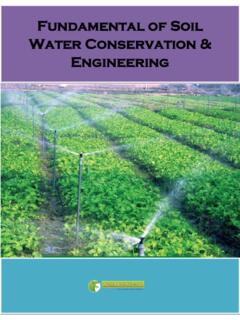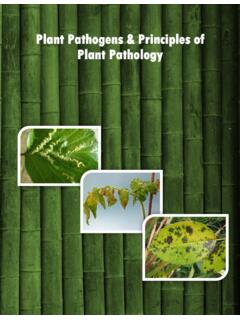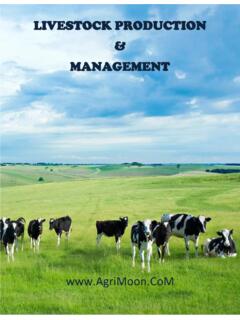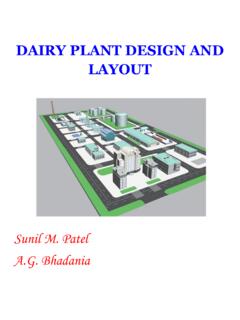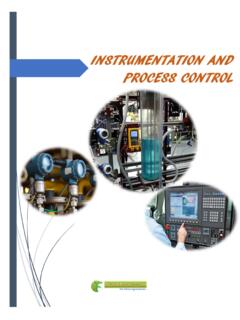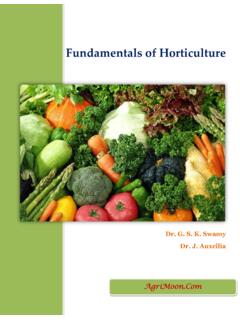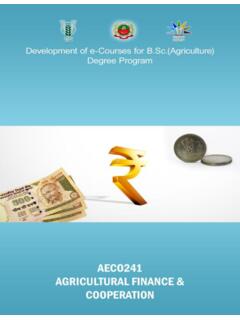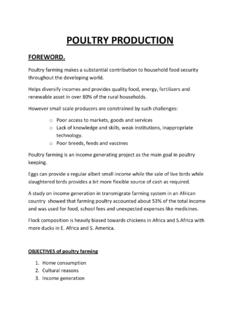Transcription of Principles of Seed Technology - AgriMoon
1 Principles of seed Technology ** ** This Book Download From e-course of ICAR Visit for Other Agriculture books, News, Recruitment, Information, and Events at Give FeedBack & Suggestion at Send a Massage for daily Update of Agriculture on WhatsApp +91-8148663744 ** ** Index Lecture Lecture name Page Lecture 1 seed production 5-12 Lecture 2 seed policy 13-16 Lecture 3 seed demand forecasting and planning for certified, foundation and breeder seed production 17-23 Lecture 4 Deterioration of crop varieties causes and maintenance 24-28 Lecture 5 seed quality 29-37 Lecture 6 Classes of seed 38-43 Lecture 7 seed production in maize 44-54 Lecture 8 hybrid seed production in maize 55-65 Lecture 9 seed production techniques in paddy varieties 66-78 Lecture 10 hybrid seed production in paddy 79-88 Lecture 11 seed production in sorghum 89-96 Lecture 12 hybrid seed production in sorghum 97-102 Lecture 13 seed production in pearl millet 103-113 Lecture 14 seed production in cotton varieties and hybrids 114-124 Lecture 15 seed production in sunflower 125-134 Lecture 16 seed production in varieties and hybrids of castor 135-140
2 Lecture 17 seed production techniques in vegetables 141-149 Lecture 18 Brinjal (solanum melongena) 150-153 Lecture 19 Chilli (capsicum frutescense) 154-156 Lecture 20 Bhendi (abelmoschus esculentus) 157-160 Lecture 21 Onion (allium cepa) 161-172 Lecture 22 seed production of cucurbitaceous vegetables 173-178 Lecture 23 seed certification 179-191 Lecture 24 Seeds act and rules 192-212 Lecture 25 Intellectual property rights (IPRS) 213-217 Lecture 26 Varietal identification 218-222 Lecture 27 seed drying 223-230 Lecture 28 seed processing 231-247 Lecture 29 seed treatment 248-259 Lecture 30 seed storage 260-276 Lecture 31 seed marketing 277-284 Lecture 32 Pricing policy 285-288 Principles of seed Technology 5 Lecture 01: seed PRODUCTION Availability of quality seeds of improved cultivars is considered crucial for realizing productivity and adoption of cultivars in different agro-climatic conditions.
3 The quality of seed alone is known to account for at least 10-15% increase in the productivity (ICAR 1993). However, lack of quality seed continues to be one of the greatest impediments to bridging the vast yield gap. Therefore, to approach the potentially realizable yield of a cultivar, production and distribution of quality seed is essential. The good quality seed should have the following characters: Genetic purity, and uniformity and should conform to the standards of the particular cultivar. Disease free, viable seeds. Free from admixtures of other crop seeds, weeds and inert matter. Acceptable uniformity with respect to size, shape and color. seed Production Systemized crop production is known as seed production.
4 In seed production adequate care is given from the purchase of seeds upto harvest adopting proper seed and crop management techniques. The benefits of seed production are Higher income Higher quality seed for next sowing Difference between seed and crop production seed production Crop production Basic seed should be from an authentic source Any seed material can be used seed plot should be selected carefully for better performance, as per edaphic and environmental requirement Can be grown in any area Needs isolation from other varieties Isolation is not necessary Needs technical skill for maintenance of quality Special technical skill is not required Maintenance of genetic purity is important Genetic purity is not required 6 Roguing is compulsorily practiced Roguing is not practiced Harvesting should be done at physiological/ harvestable maturity Harvested at field maturity Resultant seed should be vigorous and viable Question of viability does not arise Importance is given to seed quality rather than the yield Importance is given more to yield There are two types (major) of seed production ie.
5 Varietal and hybrid seed production based on the type of seed used for multiplication .The difference between varietal and hybrid seed production are as follows Varietal seed production hybrid seed production It is single parent multiplication It needs two to many parents Isolation distance requirement is less Isolation distance requirement is more Production is by open pollination Production is by managed control pollination (Female) seed can be used continuously for 3/4/5 generations seed has to be changed every time Production technique is uniform (multiplication) Technique differ with crop Production care is less Production care is more Yield will be lower Yield will be higher Profit is less Profit is higher SCOPE AND IMPORTANCE OF seed PRODUCTION Indian Agriculture has made enormous progress in the last 50 years.
6 Food grains production has risen from 50 million tons in 1947 to 212 million tons in 2003-04. The country has advanced from a situation of food scarcity and imports to that of food security and exportable surpluses. The Green Revolution of India has been universally acclaimed as a successful enterprise of the farmers, the Scientists and the Government. The land mark achievements in agriculture in the 60s and 70s were the result of a combination of inputs like introduction of high yielding varieties, increased fertilizer use, expansion of irrigation facilities, massive extension efforts, improved farm practices and, above all, ingenuity and industry of the Indian farmers. However, the growth of agriculture sector has not kept pace with the growth of the population and has stagnated.
7 The unsatisfactory growth of agriculture, Principles of seed Technology 7 apart from serious implications for food security of the country, has been adversely impacting the growth rate of country s economy. The imperative of National food security, nutritional security and economic development demand a very focused and determined approach to raise productivity and production in agriculture. In view of the fact, that the area under cultivation is unlikely to increase significantly, thrust will have to be on raising productivity per unit of cultivated land. Substantial increase in yield and quality of crops depends upon a number of factors viz., inputs like fertilizers, irrigation and plant protection measures and suitable agronomic practices.
8 However, the use of high quality seed thus plays a pivotal role in the crop production. The use of poor quality seeds nullifies the utility of all agronomic practices and every other input applied to the crop no matter how lavishly they are applied. Economically, the cost of seed is a very small component of the total cost of production. Sindhur Sen (1974) summarizes the importance of seed quality thus What are known as the seeds of hope may turn into seeds of frustration if they are not of high quality. It is therefore, important to use the seed confirming to the prescribed standards in terms of high genetic purity, physical purity, physiological quality and health quality. Since ages, Indian farmers were mostly dependent on traditional varieties; therefore seed requirements were met through farm saved seeds.
9 The use of traditional varieties coupled with farm saved seeds whose quality is not guaranteed, resulted in drastic reduction in production. seed is the critical determinant of agricultural production on which depends the performance and efficacy of other inputs. Quality seeds appropriate to different agro-climatic conditions and in sufficient quantity at affordable prices are required to raise productivity. Availability and use of quality seeds is not a onetime affair. Sustained increase in agriculture production and productivity necessarily requires continuous development of new and improved varieties of crops and efficient system of production and supply of seeds to farmers. The National Seeds Policy 2002 clearly emphasizes that It has become evident that in order to achieve the food production targets of the future, a major effort will be required to enhance the seed replacement rates of various crops.
10 This would require a major increase in the production of quality According to the National seeds Policy 2002, the thrust areas have to be - i) Varietal Development. ii) seed Production. iii) seed Replacement Rate Enhancement. iv) Primary responsibility for production of breeder seed to be that of the ICAR/State Agriculture Universities. v) An effective seed production programme. vi) Popularization of new varieties. vii) Availability of newly developed varieties to farmers with minimum time gap. 8 viii) Provision of incentives to domestic seed industry to enable it to produce seeds of high yielding varieties and hybrid seeds at a faster pace to meet the challenges of domestic requirements. After the genesis of NSP, NSE & SSC and private seed companies, production of certified and foundation seeds have been undertaken by them.
